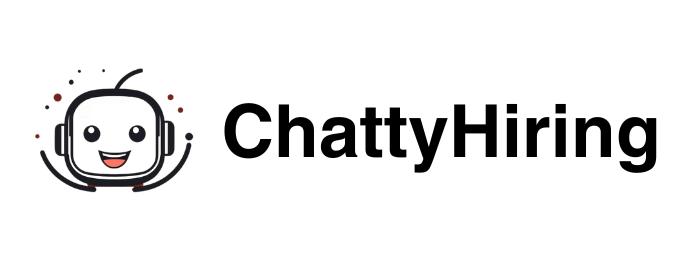In today’s globalized world, effective communication is paramount, and language skills play a crucial role in facilitating this communication. Language skills assessment is essential for identifying an individual’s proficiency in a language, which can significantly impact their personal and professional opportunities. Organizations increasingly recognize that language proficiency is not merely a desirable trait but a fundamental requirement for success in diverse environments.
By assessing language skills, employers can ensure that their teams are equipped to engage with clients, collaborate with colleagues, and navigate multicultural workplaces effectively. Moreover, language skills assessment serves as a valuable tool for educators and trainers. It allows them to tailor their teaching methods and materials to meet the specific needs of learners.
Understanding where a student stands in their language journey enables educators to provide targeted support, fostering an environment conducive to growth and improvement. This assessment process not only enhances the learning experience but also empowers individuals to take ownership of their language development, ultimately leading to greater confidence and competence in their communication abilities.
Key Takeaways
- Language skills assessment is important for understanding an individual’s proficiency in a language and identifying areas for improvement.
- Different methods, such as interviews, tests, and self-assessment, can be used to assess language skills.
- Assessing speaking and pronunciation involves evaluating fluency, accuracy, and intonation.
- Assessing listening comprehension involves testing understanding of spoken language and ability to follow instructions.
- Assessing reading comprehension involves evaluating vocabulary, reading speed, and understanding of written texts.
Different methods for assessing language skills
There are various methods for assessing language skills, each with its unique advantages and challenges. Traditional assessments, such as standardized tests, have long been the gold standard for measuring language proficiency. These tests often include multiple-choice questions, fill-in-the-blank exercises, and written essays that evaluate a learner’s understanding of grammar, vocabulary, and syntax.
While standardized tests can provide a clear benchmark for proficiency levels, they may not always capture the nuances of real-world communication.
In contrast, alternative assessment methods, such as portfolio assessments and performance-based evaluations, offer a more holistic view of a learner’s language abilities. Portfolios allow individuals to showcase their work over time, demonstrating their progress and achievements in various language tasks.
Performance-based assessments, on the other hand, involve real-life scenarios where learners must use their language skills in context.
These methods can provide deeper insights into how individuals apply their language knowledge in practical situations, making them particularly valuable in professional settings.
Assessing speaking and pronunciation

Assessing speaking skills and pronunciation is critical for determining an individual’s ability to communicate effectively in real-time conversations. One common approach to evaluating speaking proficiency is through structured interviews or oral exams, where learners are asked to respond to questions or engage in discussions on specific topics. This method allows assessors to gauge not only the content of the learner’s responses but also their fluency, coherence, and pronunciation.
Another effective way to assess speaking skills is through recorded presentations or role-playing exercises. By simulating real-life interactions, assessors can observe how well learners articulate their thoughts and ideas while also evaluating their pronunciation and intonation. This method provides a more dynamic assessment experience, allowing learners to demonstrate their abilities in a context that closely resembles everyday communication.
Additionally, using technology to record and analyze speaking performances can offer valuable feedback for both learners and educators.
Assessing listening comprehension
| Assessment Metric | Description |
|---|---|
| Listening Comprehension Test Score | The score achieved by the individual in a listening comprehension test. |
| Number of Correct Responses | The total number of correct answers given by the individual during the listening comprehension assessment. |
| Listening Comprehension Level | The level of listening comprehension skills demonstrated by the individual, such as beginner, intermediate, or advanced. |
| Time Spent Listening | The amount of time the individual spent actively listening to the material being assessed. |
Listening comprehension is a vital component of effective communication, yet it is often overlooked in language assessments. To evaluate listening skills, assessors can employ various techniques, such as audio recordings or live conversations. Learners may be asked to listen to dialogues or lectures and then answer questions related to the content.
This method not only tests comprehension but also assesses the learner’s ability to follow spoken language in different accents and speeds. Incorporating authentic materials into listening assessments can enhance the evaluation process. For instance, using podcasts, news reports, or interviews exposes learners to real-world language use and cultural nuances.
This approach helps assessors determine how well learners can understand context, tone, and implied meanings in spoken language. Furthermore, providing opportunities for learners to engage in discussions about what they have heard can deepen their understanding and reinforce their listening skills.
Assessing reading comprehension
Reading comprehension is another essential aspect of language proficiency that requires careful assessment. Traditional methods often involve reading passages followed by comprehension questions that test a learner’s ability to extract information and infer meaning. While this approach can be effective, it may not fully capture a learner’s ability to engage with diverse texts or understand complex ideas.
To create a more comprehensive assessment of reading skills, educators can incorporate various types of texts, including literary works, articles, and technical documents. This diversity allows learners to demonstrate their ability to navigate different genres and styles of writing. Additionally, assessing reading comprehension through summarization tasks or critical analysis encourages learners to engage with the material on a deeper level, fostering critical thinking skills alongside language proficiency.
Assessing writing skills

Writing skills are crucial for effective communication in both academic and professional contexts. Assessing writing proficiency typically involves evaluating various components such as grammar, vocabulary usage, coherence, and organization. One common method is through written assignments or essays that require learners to express their thoughts on specific topics.
This approach allows assessors to gauge not only the technical aspects of writing but also the learner’s ability to articulate ideas clearly. In addition to traditional writing assessments, incorporating peer reviews or collaborative writing tasks can provide valuable insights into a learner’s writing process. By engaging in peer feedback sessions, learners can develop critical evaluation skills while also gaining exposure to different writing styles and perspectives.
Furthermore, using technology tools that provide instant feedback on grammar and style can enhance the writing assessment process by offering learners immediate insights into areas for improvement.
Considerations for assessing language skills in different contexts
When assessing language skills, it is essential to consider the context in which the assessment takes place. Different environments—such as academic institutions, corporate settings, or community programs—may require distinct approaches to evaluation. For instance, assessments conducted in an academic setting may prioritize formal writing and analytical skills, while those in a corporate environment may focus more on practical communication abilities relevant to workplace interactions.
Cultural factors also play a significant role in language assessment. Assessors must be mindful of cultural differences that may influence communication styles and expectations. For example, some cultures may prioritize indirect communication or value group consensus over individual expression.
Understanding these nuances can help assessors create fair and effective evaluation criteria that respect diverse backgrounds while accurately measuring language proficiency.
Using assessment results to inform language learning and teaching
The ultimate goal of language skills assessment is to inform and enhance the learning process. By analyzing assessment results, educators can identify areas where learners excel and where they may need additional support. This data-driven approach allows for the development of targeted instructional strategies that address specific learning needs.
Furthermore, sharing assessment results with learners empowers them to take an active role in their language development journey. Providing constructive feedback based on assessment outcomes encourages self-reflection and goal-setting among learners. By fostering a growth mindset and emphasizing continuous improvement, educators can create an environment where individuals feel motivated to enhance their language skills over time.
In conclusion, assessing language skills is a multifaceted process that requires careful consideration of various methods and contexts. By employing diverse assessment techniques tailored to individual needs and environments, educators can effectively measure proficiency while promoting meaningful language learning experiences. Ultimately, the insights gained from these assessments serve as valuable tools for guiding both teaching practices and learner development in an increasingly interconnected world.
For further insights into effective language assessment strategies, you may find valuable resources at Hppy (https://gethppy.com/) and HR Examiner (https://www.hrexaminer.com/).
If you are interested in language skills assessment, you may also want to read about how AI technology is revolutionizing the recruitment process. Check out this article on unlocking efficient recruitment solutions with AI technology to learn more about how artificial intelligence is being used to streamline candidate screening and improve the overall hiring process.
FAQs
What is a language skills assessment?
A language skills assessment is a test or evaluation that measures an individual’s proficiency in a particular language. It typically assesses reading, writing, speaking, and listening skills.
Why is a language skills assessment important?
A language skills assessment is important for individuals who need to demonstrate their language proficiency for academic, professional, or immigration purposes. It helps to determine a person’s ability to communicate effectively in a specific language.
What are the common types of language skills assessments?
Common types of language skills assessments include standardized tests such as TOEFL, IELTS, and CELPIP for English proficiency, as well as DELF/DALF for French proficiency. There are also proficiency exams for other languages such as Spanish, German, and Mandarin.
How is a language skills assessment conducted?
A language skills assessment can be conducted through written exams, oral interviews, and listening exercises. Some assessments may also include tasks that require the test-taker to demonstrate their ability to write and comprehend written texts.
Who typically takes a language skills assessment?
Individuals who are non-native speakers of a language and need to demonstrate their proficiency for academic admissions, job applications, or immigration purposes typically take language skills assessments. This includes students, professionals, and immigrants.
-

A passionate advocate for the future of HR innovation. With expertise in leveraging AI to revolutionize recruitment processes, Carlos has a clear vision: empower HR teams while creating meaningful candidate experiences.
View all posts





